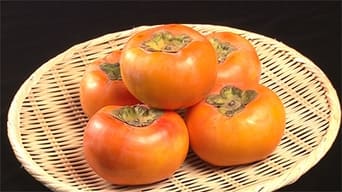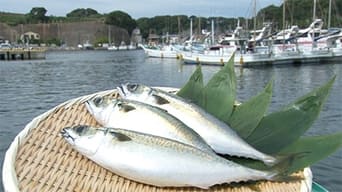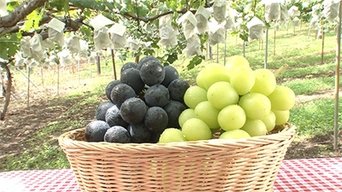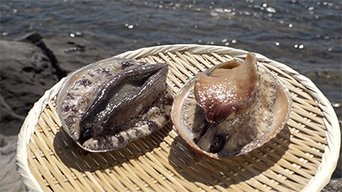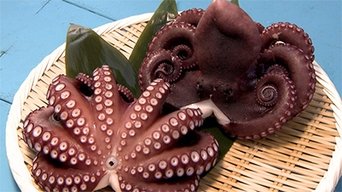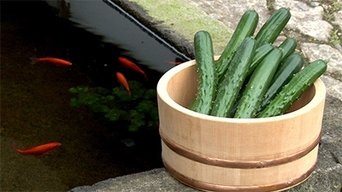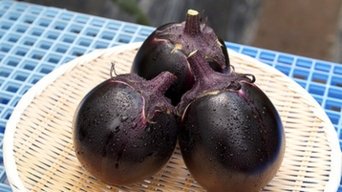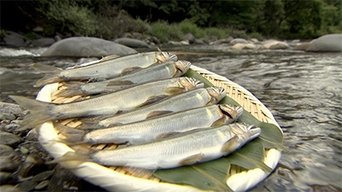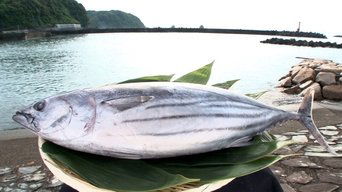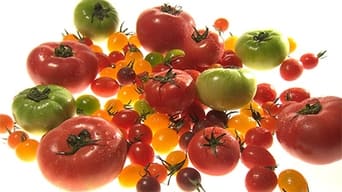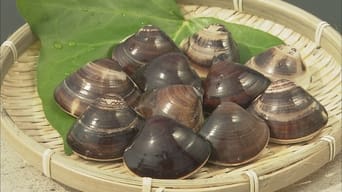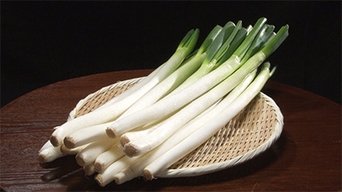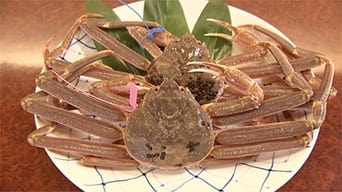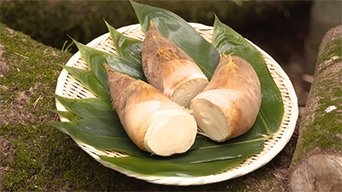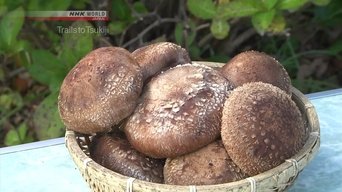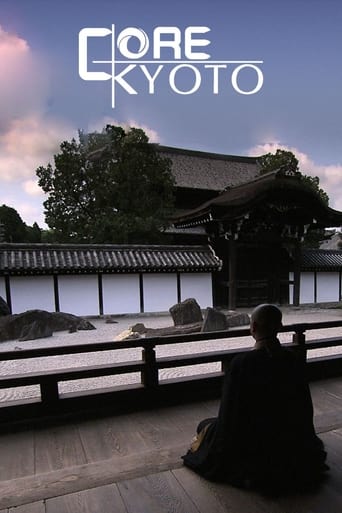
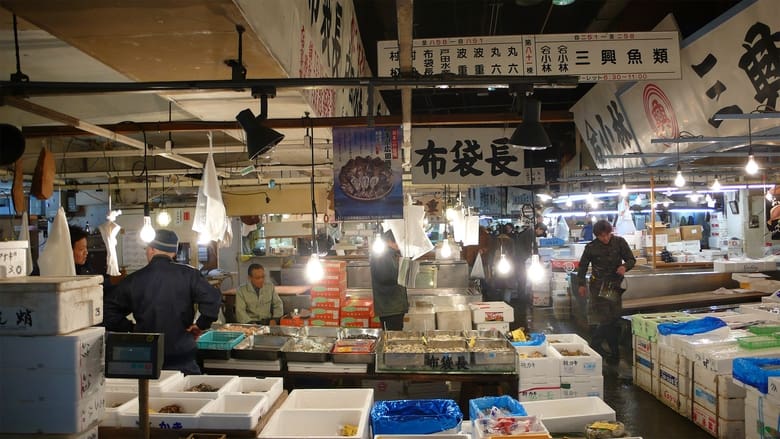
Trails to Tsukiji Season 2
"Trails to Tsukiji" is a show that focuses on Japanese food available at Tokyo's iconic Tsukiji Market where every kind of fresh food is gathered from around the country.
Watch Trailer
Trails to Tsukiji Season 2 Full Episode Guide
Our focus this time is the sweet, slightly tangy fruit called kaki, a fall specialty in Japan. The orange fruit, which is produced largely in Japan's ancient capital Nara, is rich with vitamins and nutrients. Join reporter Marie as she visits Nara to taste kaki tempura and other famous kaki dishes. We also focus on dried kaki, a popular snack. Bite into the vast world of this amazing fruit which symbolizes the fall season for many in Japan.
The program visits the far northern island of Hokkaido, focusing on potatoes that gained brand recognition through strict selection standards, and producers aiming to proliferate Japan born new breeds of potatoes. In addition, unique Japanese potato dishes, and reservation only premium potato chips fried with rice oil are introduced as a part of Japan's potato culture.
Japan's annual catch of saba (mackerel) is about 500,000 tons, the largest in the world, and the fish is an essential part of both Japan's cuisine and its culture. Join us as we discover a world of delectable saba dishes and find out why the fish means so much to so many people, including fishermen, restaurateurs and even members of a saba fan club. Welcome to the world of saba, one of the most beloved fish in Japan.
Grapes are known and loved throughout the world, but Japan's stand out from the bunch with their large, round and flawless jewel-like shape. Discover the history of Japanese grapes, new seedless varieties with edible skin, and unique grape-based delicacies from desserts to breads to savory sushi dishes. Welcome to Japan's ever-growing world of grapes.
Abalone, called "the treasure of the sea" in Japan, is the country's most expensive shellfish, trading at over $100 per shell. One of the factors leading to its high price is the 2,000-year-old diving method used to catch it. Learn all about this tradition, the women who pass it down from generation to generation, and a host of delicious abalone dishes in this exciting episode!
Edamame: a Japanese treat gaining popularity worldwide. These green beans, made from unripened soybeans, are popular boiled, and salted edamame are a must when drinking a cold beer. But the beans can also be used in dishes ranging from fine Italian cuisine to delicious desserts. Join us in unpeeling the wondrous world of edamame.
Octopus, the mysterious creature of the sea, is loved most by the Japanese. The fact that 1/4 of the octopus caught worldwide is eaten in Japan proves this. In the fishing style using the "octopus pod", the unexpected characteristics of the octopus is unveiled. To shed light on the ever-changing wonders of the octopus, various cuisines such as the beloved fast food "octopus ball", sashimi and a simmered dish will be introduced.
Cucumbers grow all over the world, but Japan's are especially crunchy and juicy and their bodies are exceptionally straight. Come along on our Japanese cucumber journey and discover the secret of how they're grown, a unique cucumber with a history that stretches back 400 years, and unique and delicious Japanese cucumber-based dishes.
A special eggplant grown only in Japan's ancient capital Kyoto, kamo-nasu has been cultivated for over 300 years. Join us as we visit hardworking farmers and chefs who create mouthwatering dishes.
Japan's most beloved freshwater fish, the ayu, or sweetfish in English, inhabits only the cleanest rivers in the country. Living on a diet of pure algae, the ayu has a unique watermelon-like scent and a delicious flavor. Journey with us to the ayu's beautiful natural habitat and discover how this so-called queen of the river is caught and prepared in a variety of local and modern dishes.
More than just a fruit, Japan's muskmelon is regarded as an edible piece of art. The most expensive fruit in Japan, muskmelon costs over $200 per piece. Popular as a special gift for loved ones, it has a refreshing sweetness and a texture that almost melts in your mouth. But muskmelon, which is covered in a complex net-like surface, is prized almost as much for its beauty as its flavor. Join us and find out the secrets of this pricey yet popular melon.
Reasonably priced yet packed with umami flavor, katsuo or bonito in English is one of Japan's favorite fish. Discover how the red meat of katsuo pairs well with a variety of seasonings, hear all about how bonito flakes are created, and visit one of katsuo's main fishing ports, Kochi Prefecture, to learn about the region's unique fishing methods and delicious dishes. Dive in and discover why katsuo has been popular in Japan for centuries!
Of all the produce sold in Tsukiji Market, tomatoes are the king. In this episode, we visit tomato farms, shops and restaurants to discover Japan's unique tomato culture. Find out why Japanese tomatoes look so beautiful, how a disastrous typhoon led to the invention of an unusually sweet tomato, and how one bold chef fuses them with traditional Japanese cuisine.
Beneath Asia's beautiful lotus flowers lie renkon, one of Japan's favorite foods. Known in English as the lotus root, these vegetables, which are actually rhizomes, grow in muddy bogs and offer various flavors depending on how they are cooked. Join Canadian reporter Kyle Card as he explores renkon cultivation methods, traditional and modern cooking styles and even the spiritual meaning behind this mysterious food.
The Japanese love shellfish, and their favorite is without doubt the common orient clam, or hamaguri. With each shell having only one perfect match, it's considered a symbol of undying marriage. It's also served at the yearly girl's festival to pray for young women's happy futures and employed in traditional art pieces. Not just delicious, hamaguri is deeply rooted in Japanese culture.
In this show about food from Tsukiji market, we unveil the secrets of "wasabi", a key item in sushi by visiting a wasabi store and an organic grower, exploring how it is grown and eaten in Japan.
Thanks to its symbolic color, red sea bream, or tai, is a fish for celebration in Japan. Our tai journey takes us to a fishing port where fisherman risk their lives for the catch, to a top-class restaurant in Tokyo where a young chef blends tai into his French cuisine, and to a research institute where scientists have infused tai with the flavor of oranges.
The Japanese green onion, or negi, is a must for popular Japanese foods like sukiyaki and ramen. Despite being a staple of the Japanese diet since the 18th century, its popularity only continues to grow. Negi, which takes 10 months to grow and reaches 70 centimeters, is spicy when raw but sweet when cooked and contains as much sugar as mangoes. Raw, boiled, grilled: depending on how it is cooked, negi offers a wide range of tastes. Join us in discovering this mysterious vegetable.
Tokyo's Tsukiji market is a must-visit destination for any food lover. You'll find not only fresh fish here, but everything you need to create a Japanese meal, from all over the country. In this program we introduce some special Japanese ingredients such as Katsuobushi, or bonito flakes. Shaved from rock-hard slabs of fermented fish, the flakes are used in the soup base of almost every Japanese dish, and are the essence of the umami taste. We will show you how they're made, and the secret behind their magical flavor.
The Japanese love to eat crab, and snow crab, a winter specialty, is their favorite. No effort is spared to bring the freshest, highest-quality snow crab to Japanese consumers, with crabs delivered to Tsukiji alive, wholesalers carefully recreating their deep sea habitat, and fishermen sorting them into 100 different grades with an advanced ranking system. We also showcase various snow crab dishes from everyday meals to high-class French cuisine. Prepare to enter the world of the snow crab!
You've heard of pandas eating bamboo, but did you know the Japanese do too? Bamboo shoots, known in Japanese as takenoko, grow at the incredible speed of 1 meter per day, reaching 15 meters in 3 months. But it's the softer shoots under the soil that are prized by the Japanese. Check out the special techniques of Japan's best takenoko hunters and various ways this springtime specialty is prepared and enjoyed.
With 70% of its land covered in forest, Japan is rich in various edible mushrooms. Among them, the mushroom that enjoys the largest amount of trading in Tsukiji is the shiitake. It enjoys worldwide popularity for its low calorie count and healthy properties. Shiitake, a must for Japanese cuisine, is cultivated in several ways. We visit shiitake farmers to learn their very unique farming techniques. We also explore various ways to enjoy one of shiitake's most attractive points, its rich aroma.
Thanks to its unique form, fugu is popular not just as food but also for ornamental purposes and art motifs. But despite its good taste and looks, fugu is extremely poisonous. Due to its deadly poison, fugu is traded and cooked only by licensed specialists. Despite the danger, its delicate taste and unique texture are a major attraction for foodies, who eat it as sashimi, tempura and hot pot. Find out why people are in love with this poisonous fish and how the Japanese enjoy it safely.
Ise-ebi, or "Japanese spiny lobster", the king of lobster, can cost up to $50 at Tsukiji. To preserve the flavor, ise-ebi must be kept alive until just before cooking. Teamwork between fishermen and wholesalers makes live ise-ebi delivery to restaurants possible. It is said that the ise-ebi's long tentacles represent longevity and that its armor-like body symbolizes the vigor of the samurai. As a symbol of luck, longevity and vigor, ise-ebi is a must for times of celebration.
Seasons




